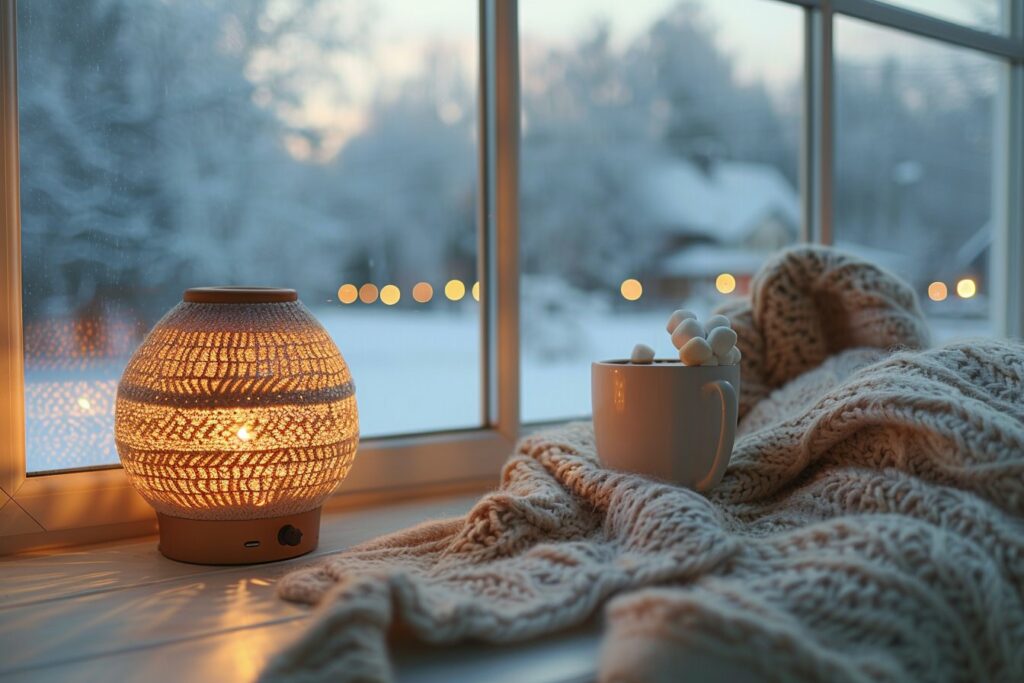As winter approaches and daylight hours gradually decrease, many people can experience the effects of Seasonal Affective Disorder (SAD). The lack of sunlight combined with longer nights may lead to depression and social isolation among some individuals. In this article, we explore tips and methods that may help to alleviate the symptoms of SAD during these challenging months.
Understanding Circadian Rhythms
The foundation for understanding SAD lies in our body’s internal clock, known as the circadian rhythm. According to circadian rhythm expert Joseph Takahashi, this biological clock is influenced by the day-night cycle and regulates various bodily processes such as sleep, hormone production, and metabolism. When the amount of sunlight during the day alters, it can disrupt the balance of these critical functions, leading to depressive symptoms and other conditions related to SAD.
Light Therapy: Bring Sunshine into Your Life
One helpful method for counteracting the reduced exposure to natural sunlight during winter is light therapy. It consists of exposing oneself to an artificial light box that emits at least 10,000 lux for a minimum of 30 minutes daily. Dr. Jason Tucciarone explains that a bright sunny day typically ranges from 50,000 to 100,000 lux, so using a light box can help maintain a similar level of brightness even when natural light is scarce. Consider incorporating this practice into your daily routine, especially early in the morning, to promote healthier circadian rhythms and mood regulation.
- Choose a light box specifically designed for SAD treatment – consult your mental health professional or primary care physician for guidance on suitable options.
- Place the light box at an appropriate distance (often 16 to 24 inches away), and ensure it’s placed at a slightly downward angle to make your exposure more comfortable.
- Ensure that you maintain a consistent schedule, using the light box around the same time every day for optimal results.
Maintaining Quality Sleep Hygiene
Your ability to get a good night’s sleep greatly affects how you feel emotionally and physically. Maintaining proper sleep hygiene is crucial in combating SAD symptoms. Here are some tips to prioritize quality sleep:
- Establish a consistent bedtime routine: This could involve dimming the lights, engaging in relaxing activities such as reading or taking a warm bath, and avoiding intense emotional interactions before bed.
- Minimize screen time: Limiting the use of electronics close to bedtime can make it easier to fall asleep, as the blue light emitted by smartphones, tablets, and laptops can disrupt our natural sleep-wake cycles.
- Create a comfortable sleep environment: Keep your bedroom cool, dark, and quiet to promote restorative sleep. Invest in supportive pillows and bedding materials to further enhance comfort.
Seek Professional Support for Coping with SAD
If you suspect you may be suffering from SAD, it is essential to seek medical attention. Cognitive-behavioral therapy (CBT) has been shown to be effective in treating individuals experiencing seasonal affective disorder. Through CBT, patients develop an awareness of their condition, identify negative thought patterns and learn strategies for replacing those thoughts with more positive ones. Additionally, healthcare professionals may prescribe medications such as antidepressants to manage symptoms of depression associated with SAD.
Bolster Your Mental Health with Lifestyle Modifications
Implementing healthy lifestyle changes can also contribute to the management of SAD symptoms. Consider the following tips:
- Engage in regular physical activity: Regular exercise, particularly outdoors when sunlight is available, can help improve mood and regulate sleep patterns.
- Nurture social connections: Isolation tends to exacerbate feelings of depression, so make an effort to stay connected with friends, family, and support networks during the winter months.
- Prioritize self-care: Treat yourself kindly by regularly engaging in activities you enjoy, giving yourself breaks when needed, and practicing stress-management techniques such as meditation or deep breathing exercises.
In conclusion, managing seasonal affective disorder involves a multifaceted approach that combines exposure to light through therapy, maintaining proper sleep hygiene, seeking professional support, and implementing healthy lifestyle modifications. With consistent effort and adherence to these strategies, individuals suffering from SAD can experience improved emotional well-being throughout the colder, darker months of the year.

